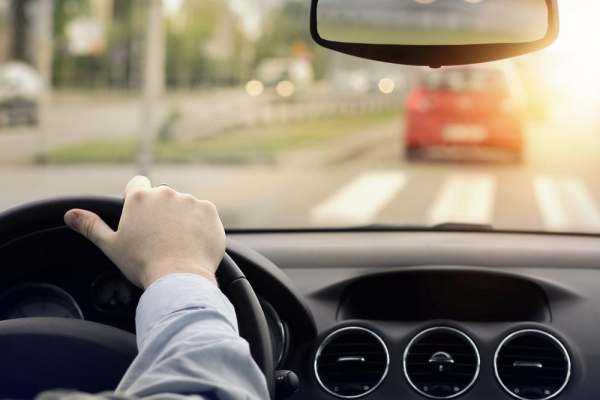Etymology
The origin of the term driver, as recorded from the 15th century, refers to the occupation of driving working animals, especially pack horses or draft horses. The verb ' to drive ' in origin means "to force to move, to impel by physical force". It is first recorded by electric railway drivers in 1889 and of a motor-car driver in 1896. Early alternatives were motorneer, motor-man, motor-driver, or motorist. French favors "conducteur" (the English equivalent, "conductor", being used—from the 1830s—not of the driver but of the person in charge of passengers and collecting fares), while German-influenced areas adopted Fahrer (used of coach-drivers in the 18th century, but shortened about 1900 from the compound Kraftwagen Fahrer), and the verbs führen, lenken, steuern—all with a meaning "steer, guide, navigate"—translating to conduire.
Introduction of the automobile
In 1899, an automobile was driven to the summit of Mount Washington, New Hampshire, for the first time
The world's first long-distance road trip by the automobile was in August 1888 when Bertha Benz, wife of Benz Patent-Motorwagen inventor Karl Benz, drove 66 mi (106 km) from Mannheim to Pforzheim, Germany, and returned, in the third experimental Benz motor car, which had a maximum speed of 10 mph (16 km/h), with her two teenage sons Richard and Eugen but without the consent and knowledge of her husband.She had said she wanted to visit her mother but also intended to generate publicity for her husband's invention, which had only been taken on short test drives before.
In 1899, F. O. Stanley and his wife, Flora, drove their Stanley Steamer automobile, sometimes called a locomobile, to the summit of Mount Washington in New Hampshire in the United States to generate publicity for their automobile. The 7.6-mile (12.2 km) journey took over two hours (not counting the time to add more water); the descent was accomplished by putting the engine in low gear and much braking.[6]
Driving skills
Driving in traffic is more than just knowing how to operate the mechanisms that control the vehicle; it requires knowing how to apply the road rules (which ensures safe and efficient sharing with other users). An effective driver also has an intuitive understanding of the basics of vehicle handling and can drive responsibly. Although direct operation of a bicycle and a mounted animal are commonly referred to as riding, such operators are legally considered drivers and are required to obey the rules of the road. Driving over a long distance is referred to as a road trip.
In some countries, a basic both practical and theoretical knowledge of the rules of the road is assessed with a driving test(s) and those who pass are issued a driving license.
Physical skill
A driver must have physical skills to be able to control direction, acceleration, and deceleration. For motor vehicles, the detailed tasks include:
- Proper hand placement and seating position
- Starting the vehicle's engine with the starting system
- Setting the transmission to the correct gear
- Depressing the pedals with one's feet to accelerate, slow, and stop the vehicle and
- If the vehicle is equipped with a manual transmission, modulate the clutch
- Steering the vehicle's direction with the steering wheel
- Applying brake pressure to slow or stop the vehicle
- Operating other important ancillary devices such as the indicators, headlights, parking brake, and windshield wipers
- Speed and Skid control
- Mental skill
- Avoiding or successfully handling an emergency driving situation can involve the following skills:
Observing the environment for road signs, driving conditions, and hazards
Awareness of surroundings, especially in heavy and city traffic
Making good and quick decisions based on factors such as road and traffic conditions
Evasive maneuvering
Understanding vehicle dynamics
Left- and right-hand traffic
Distractions can compromise a driver's mental skills, as can any altered state of consciousness. One study on the subject of cell phones and driving safety concluded that, after controlling for driving difficulty and time on task, drivers talking on a phone exhibited greater impairment than drivers who were suffering from alcohol intoxication. In the US "During daylight hours, approximately 481,000 drivers are using cell phones while driving according to the publication on the National Highway Traffic Safety Association. Another survey indicated that music could adversely affect a driver's concentration."
Seizure disorders and Alzheimer's disease are among the leading medical causes of mental impairment among drivers in the United States and Europe. Whether or not physicians should be allowed, or even required, to report such conditions to state authorities, remains highly controversial.
Safety
Winter driving can pose serious hazards in countries with colder climates. Safety issues in driving include:
- Driving in poor road conditions and low visibility
- Texting while driving
- Speeding
- Drug–impaired driving and driving under the influence
- Distracted driving
- Sleep-deprived driving
- Reckless driving and street racing

